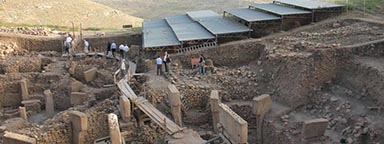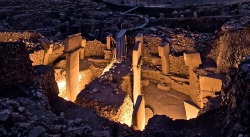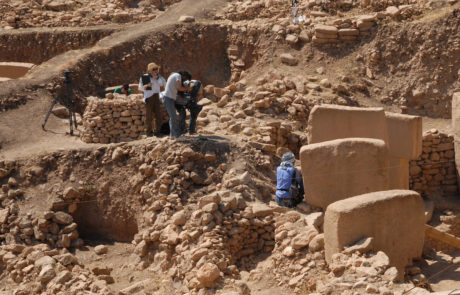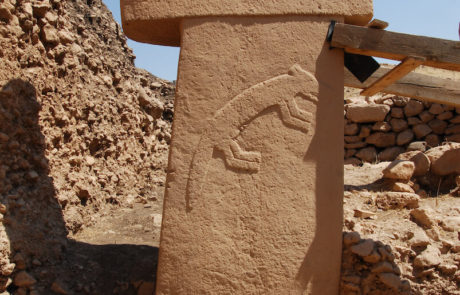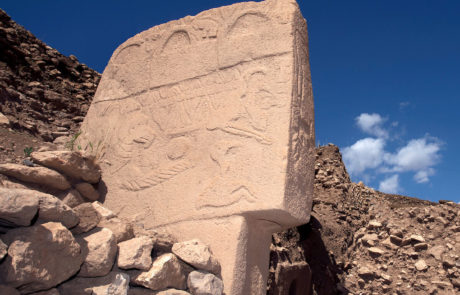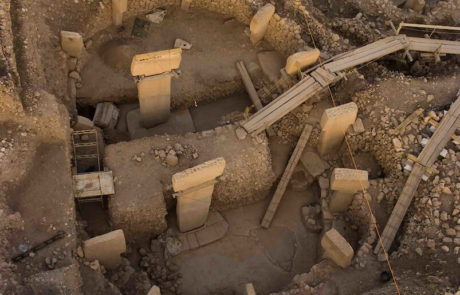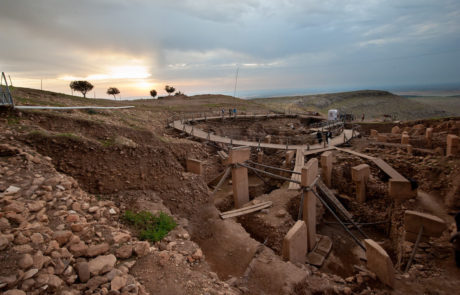Göbekli Tepe, Turkey
Investing in community training and local employment to protect humanity’s oldest site of worship
*Global Heritage Fund suspended on-site activities at Gobekli Tepe in July 2015. GHF hopes to return to the site in the future to focus on archaeological conservation, site management, and community development.
Predating the Egyptian pyramids by 6,500 years, Göbekli Tepe is the oldest place of worship ever discovered. In fact, as Newsweek reports, this vast and breathtaking temple complex in southeastern Turkey near the Syrian border may be, “the very first thing human beings ever built.”
Before the invention of pottery, agriculture, domesticated animals or writing, hunter-gatherers constructed this vast ceremonial site of at least fifty colossal T-shaped pillars, some as high as 17 feet, adorned with intricate reliefs of totem animals such as jaguars, symbols of death like carrion birds, and game animals such as the wild boar that still roam these hills today. Covering the entire hillside and visible for miles around in its day, these Early Neolithic monoliths boast diameters ranging from 30 to 100 feet, weigh up to 20 tons and were each set within around 20 concentric rings, the widest measuring 30 yards across.
Before excavations at Göbekli Tepe, it was not thought possible that such an ancient community could have erected a complex on this scale. The massive sequence of stratification layers here suggests several millennia of activity, perhaps reaching back to the Mesolithic period. The oldest occupation layer even contains pillars linked by coarsely built walls. Four such temple buildings have been uncovered and geophysical surveys indicate the existence of 16 additional structures.
Yet we know this was not a settlement but a sanctuary where early humans met to engage in sacred rites. Göbekli Tepe thus potentially overturns long held theories of social development by offering evidence that communal worship first drew mankind together rather than the city which begat the temple.
Hastily buried by its congregants, Göbekli Tepe (meaning “Potbelly Hill” in Turkish) lay hidden for millennia under gently sloping curves of tawny earth. Ground-penetrating radar studies indicate only five percent of the entire structure has been excavated to date however Göbekli Tepe is nonetheless endangered by natural and manmade threats including looting, erosion and the freeze/thaw cycle.
Working with our partners in the local municipal authority, the Turkish Ministry of Tourism and Culture, German Archaeological Institute (DAI) and German Research Foundation (DFG), Global Heritage Fund has identified key goals at Göbekli Tepe. These include comprehensive Site Management and Conservation Plans, construction of a shelter over the exposed archaeological features, conservation of the historic art and architecture including structural support for the most vulnerable monoliths, training of community members in conservation and related employment initiatives, sustainable tourism development and aiding Turkish authorities in securing World Heritage Site inscription.
Some images courtesy of Nico Becker, Vincent Musi, and Dr. Klaus Schmidt



